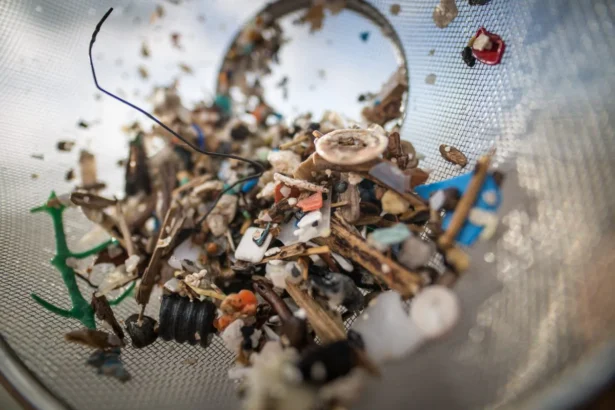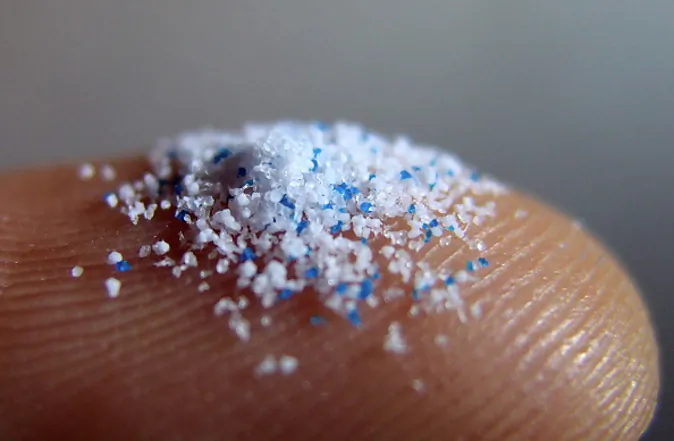A new study has found microplastics in the majority of commonly consumed protein foods such as seafood, pork, chicken, and plant-based meat alternatives in the United States.
The findings of the study—conducted by researchers at the nonprofit Ocean Conservancy and the University of Toronto—were published on Jan. 8 in the journal Environmental Pollution.
Researchers analyzed samples taken from 16 different protein types that were destined for consumers in the U.S., including seafood, pork, beef, chicken, tofu, and three different plant-based meat alternatives.
Specifically, they looked at store-purchased breaded shrimp, minced pollock, fish sticks, white Gulf shrimp (headless/shell-on), Key West pink shrimp (headless/shell-on), Alaska Pollock fillets (skinless), chicken nuggets, sirloin steaks, pork loin chops, chicken breasts, plant-based nuggets, plant-based fish sticks, plant-based ground beef, and tofu blocks.
The samples included unprocessed, minimally processed, and highly processed protein types, as well as mostly natural/organic products.
Overall, researchers found microplastics in 88 percent of the protein food samples tested.
Notably, across all samples, nearly half (44 percent) of the identified microplastics were fibers, which researchers said is consistent with other studies suggesting that fibers are the most common form of microplastics in the environment.
Roughly a third (30 percent) of the microplastics were plastic fragments, researchers said.
‘Prolific Plastic Pollution’
The study also found that highly processed products contained the most microplastics per gram but that there was no statistical difference in microplastic concentrations between land- and ocean-sourced proteins.
“No statistical difference was found between high-processed products and fresh-caught products, suggesting that food processing is not the only source of microplastic contamination and opening avenues for further research,” the study authors wrote.
Integrating the results of this study with survey data from separate, upcoming findings by Ocean Conservancy and the University of Toronto, researchers estimate that an average American adult consumes, on average, 11,500 microplastics per year.
However, they note that maximum exposure could reach up to 3.8 million microplastics per year if calculated using the highest levels of microplastics found in each protein type and the average reported protein consumption rates.
“This is a startling reminder of just how prolific plastic pollution has become. Humans live on land and yet seafood samples are just as likely to be contaminated with plastics as are terrestrial-derived proteins,” said study co-author Dr. Britta Baechler, a marine biologist and associate director of plastics science at Ocean Conservancy.
“There’s no escaping them no matter what you eat, it seems. The plastic pollution crisis is impacting all of us, and we need to take action to address its many forms,” Dr. Baechler said.

What Are Microplastics?
Microplastics are extremely small plastic particles composed of mixtures of polymers and functional additives measuring less than five millimeters in size.
They are generally unintentionally released into the environment because of the disposal and breakdown of larger consumer products or industrial waste.
Despite their findings, researchers said they could not draw conclusions regarding the impact of direct consumption of the microplastics identified in the protein products they tested, adding that future investigative work is needed.
Researchers added that further studies should also probe additional foods that are commonly consumed in the U.S. including dairy, grains, and vegetables.
The latest findings come after a 2023 Chinese pilot study published in Environmental Science and Technology found the presence of microplastics in heart tissue.
A year prior, a group of researchers in Europe said that they had discovered microplastics in human blood for the first time.
While the health effects of ingesting microplastics are not clear, a University of Hull study published in 2021 asserted that they can cause cellular death or allergic reactions.
“It’s tempting to want to draw conclusions like ‘eat less of this and more of that’ to avoid microplastics in your diet but right now we still know very little about the microplastic burdens in commonly consumed foods,” said the Ocean Conservancy’s study’s primary co-author Madeleine Milne.
“Our study adds to this knowledge but also demonstrates the need for further research to better understand the bigger picture, including where these microplastics are coming from and the potential human health risks.”
From The Epoch Times

